April Hirdes knows all about the stares, jeers and unkind words directed toward her son.
But she also knows first-hand that love outshines them all.
Born with cranial-facial complications, Hirdes’ son, Easton, 9, is a virtual reenactment of the hit movie, “Wonder,” which depicts a young boy who deals with chiding from his peers. Through the spirit of his heart and soul, the boy ultimately gains respect and cheers.
Hirdes didn’t need Hollywood to direct her. She knew early on in her pregnancy that something wasn’t quite right with her son.
“They say there’s a motherly instinct,” Hirdes said. “I assumed I had a child with Down syndrome. Something just felt off.”
Because she had a blood clot during a previous pregnancy, she began seeing Spectrum Health maternal fetal medicine specialists at 13 weeks.
“It was very reassuring to have the 13-week ultrasound,” Hirdes said. “They said everything looked good.”
At 20 weeks, the routine ultrasound revealed Easton’s cranial-facial issues.
“I kind of noticed things looked different,” Hirdes said. “I look at ultrasounds every day with my job. But I kind of tuned it out because I had it in my head that everything was going to be OK.”
Everything wasn’t OK. Not at all.
‘Something was very wrong’
Hirdes remembers the moment her obstetrician came into the room.
“I could tell immediately from the look on her face that something was very wrong,” Hirdes said. “I had an immediate breakdown and tears.”
Hirdes was scheduled to fly to a work conference in Florida the following morning.
“We got just phenomenal care right away,” she said. “They were able to fit us in for an amniocentesis the next morning before I got on the airplane.”
When she arrived in Florida, Hirdes received a call. The amniocentesis results came back as normal.
Things have not come easy for him. He doesn’t really know life without challenges. I can’t imagine any other kid coping as well as he has with all that he’s gone through.
“There was no syndrome, no abnormality that could be identified,” Hirdes said. “This looked to be a fluke gene mutation. Very rare. We knew that Easton had a mid-line facial cleft and duplicated big toes on both feet. That’s all we knew to expect. The face had failed to come together and there was a big cleft down the middle of the face. The nose was never formed. He had very widespread eyes.”
The ultrasound gave the first glimpse.
“It was very, very clear,” she said. “The ultrasound images were strikingly abnormal.”
For the remainder of her pregnancy, Hirdes underwent weekly ultrasounds at Spectrum Health maternal fetal medicine.
But then, more issues.
“He was unable to swallow in utero,” Hirdes said. “I got really, really big. I had to have the fluid removed from my uterus because there was a risk it might burst.”
Frightening entrance
At 5 a.m. on June 28, 2009, doctors delivered baby Easton via C-section.
“I was so scared something was going to go catastrophically wrong,” Hirdes said. “The baby was clearly in distress. Anesthesia was able to put an epidural in so I could be awake. I wanted to be awake to see him in case he didn’t survive.”
Easton survived the birth and went directly to the neonatal intensive care unit, where he had to be placed on a ventilator because he stopped breathing.
“I held him one time before he was placed on a ventilator,” Hirdes said. “We got one picture of me holding him.”
On day 7 of young Easton’s life, he underwent a tracheotomy.
“It’s really difficult to be on the patient side of things,” Hirdes said. “He had a trach and feeding tube placed. We weren’t able to hold him until he was 2 weeks old.”
After 40 days, mom and baby returned home—with nursing care.
“This was a massive adjustment,” Hirdes said. “We’re fairly private people. We had a nurse in our home every day, every night. It’s hard to give up that control of somebody else caring for your baby. That was the biggest adjustment—having somebody else in your home taking care of your fragile little infant.”
Since those days of intense worry and fret-filled fear, Easton has grown. And so has his mom—both in wisdom and experience.
“Easton is 8 1/2 now and he’s doing great,” Hirdes said. “We’ve gone through extensive facial reconstruction surgeries.”
Chad Afman, MD, a Spectrum Health Medical Group pediatric otolaryngologist, has reworked Easton’s airway every 8 to 12 months for the last seven years.
The Spectrum Health Helen DeVos Children’s Hospital orthopedic team re-sculpted Easton’s feet.
‘Like a regular kid’
“He had both of his big toes amputated and revised,” Hirdes said. “His feet look fairly normal now. He walked with a special walker until age 5. Now, he runs around like a regular kid.”
Easton has mainstreamed into the Coopersville Public School system and just completed second grade.
“He’s doing fantastic but he’s clearly way behind,” Hirdes said. “He has a lack in cognitive skills compared to his peers, but he’s making progress. He interacts.”
Mom, you’ve got to stop. He’s going to be awesome at school. I have no problem with him coming to my school. He’s going to be my friend and everyone’s friend.
Easton does more than interact. He thrives in his setting. He exudes excitement for learning, for his friends, teachers and the entire school experience.
“He is the most social, outgoing kid that gives high-fives down the hall and hugs everyone on his way into school,” Hirdes said. “He’s everybody’s best friend. He honestly should be a greeter there. He loves it.”
Easton’s in-utero issues caused speech delays, so he communicates with the help of an iPad.
“He can use my iPhone better than I can and coordinate it with his iPad,” Hirdes said. “He’s very much into movies. He loves to watch his big brother play football and basketball.”
Easton and his little sister, Maddie, 7, are close companions.
“She was definitely brought to us for a reason, and that’s to be Easton’s best friend,” Hirdes said.
A couple of years ago, Easton’s big brother, JJ, read the book “Wonder.”
“He said, ‘Mom, you have to read this book, it’s just like our story—it’s just like Easton,’” Hirdes said.
The book couldn’t have come at a better time. Hirdes felt immense worry about transitioning Easton into the Coopersville school system.
Would he be accepted? Would his uniqueness cause teasing and jeering? Would he break down in front of bullies? Or would she?
“I was really scared about Easton going to school,” Hirdes said. “I was worried Easton would be teased and JJ would be teased and known as the one who had a brother who was not normal.”
It was JJ’s wisdom that guided her through the public school storm.
JJ said, “Mom, you’ve got to stop. He’s going to be awesome at school. I have no problem with him coming to my school. He’s going to be my friend and everyone’s friend.”
Hirdes streamed a million tears when she dropped Easton off that first day.
But Easton’s spirit prevailed.
“When I picked him up, I learned I had no reason to be worried,” Hirdes said. “The schools are definitely doing something right with all these ‘be kind’ and anti-bullying campaigns. He’s more than accepted—he’s a little rock star. He’s everyone’s friend.”
Besides the “be kind” campaigns, Hirdes is pleased that Hollywood spun her child’s condition into the spotlight with the “Wonder” movie.
“It’s our story for sure,” she said. “I spent so much time during the movie wondering what was going through Julia Roberts’ head in every scene. I want to see it again. I think there was so much that was unspoken in the movie. It’s good to get this out there. We’re super happy this topic has been getting the attention it’s getting.”
Hirdes is a mom, though. And in true Mom fashion, she still worries.
Although she’s no longer concerned about how the kids at school will react to her son’s appearance, she still fears non-thinking adults may say something they shouldn’t.
“I don’t want to run into a person who says something rude or sets something off,” she said. “It really is a huge relief to realize a lot of people saw the movie and a lot of people now understand what we feel—just the fear of bringing your child out that looks so dramatically different than your kid.”
Easton and his family have weathered the challenges well, Dr. Afman said.
“Things have not come easy for him,” he said. “He doesn’t really know life without challenges. I can’t imagine any other kid coping as well as he has with all that he’s gone through.”
Dr. Afman said Easton is doing quite well from a breathing standpoint.
“He still has quite a bit of reconstruction surgery ahead of him,” he said. “He still has nasal stents in place but they have become less of an issue over time.”
Dr. Afman said he’s pleased Easton has been able to mainstream into the public school system.
“He’ll have the social challenges that come along with that and a lot of questions, but a supportive community around him will give him that bubble that he needs to grow and develop,” he said.

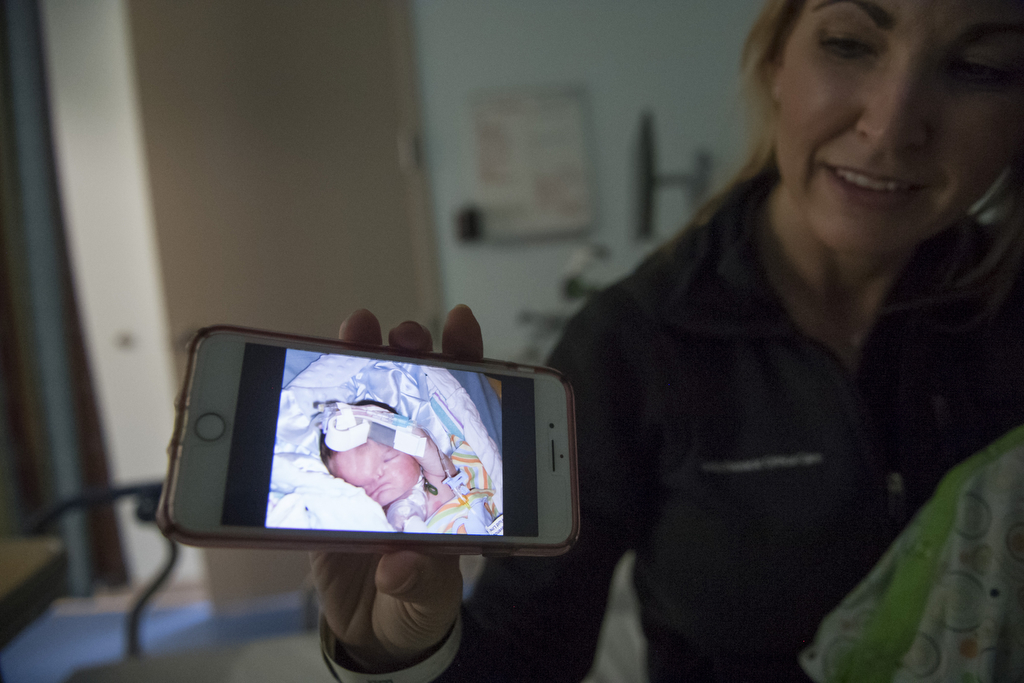

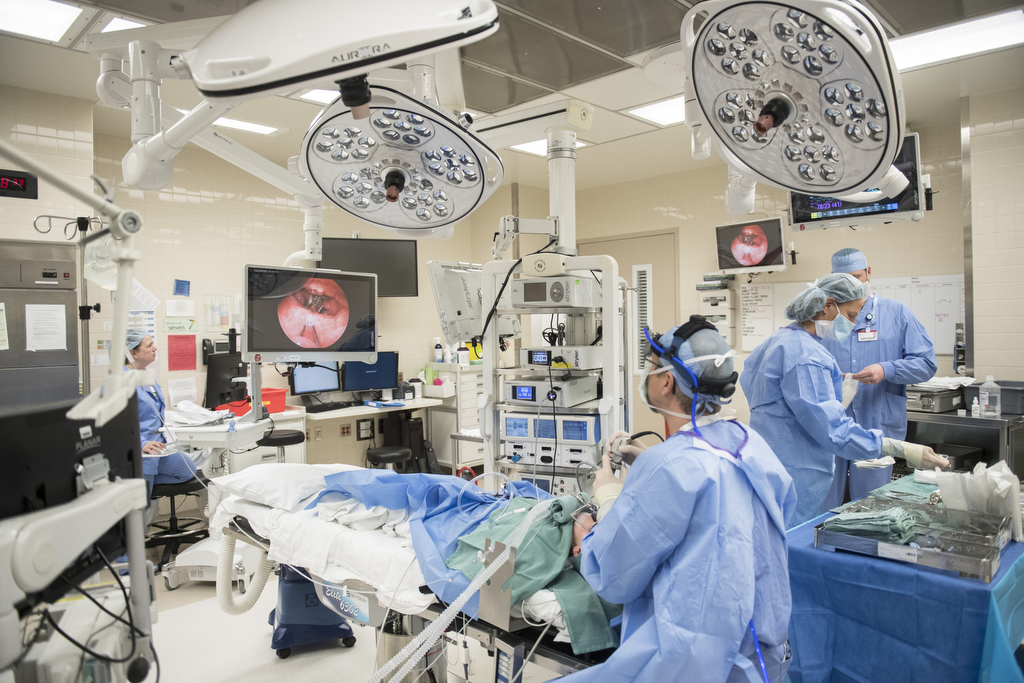


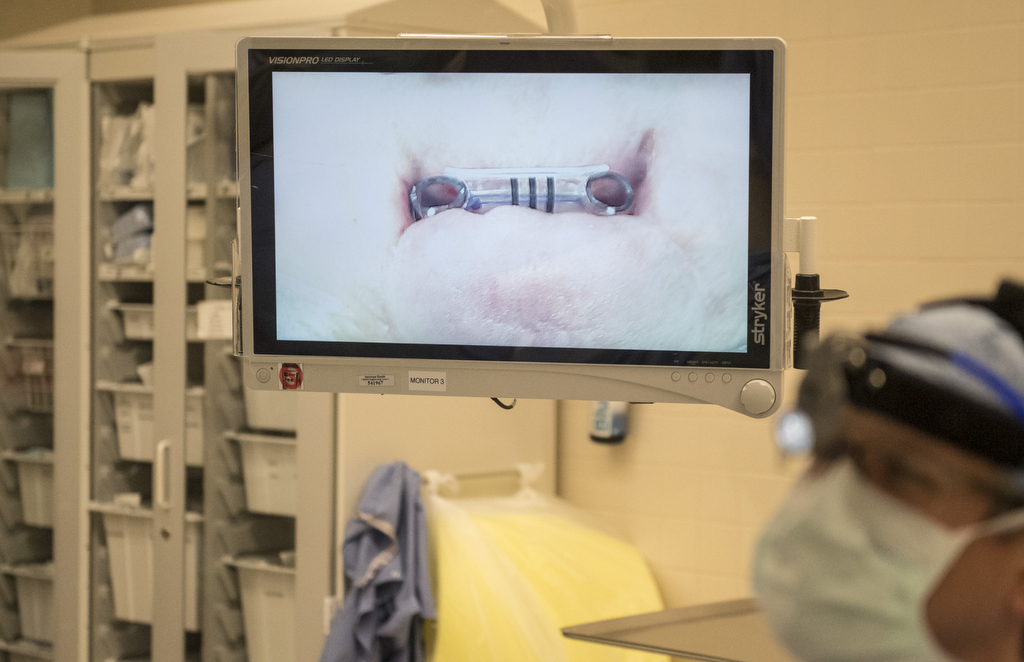

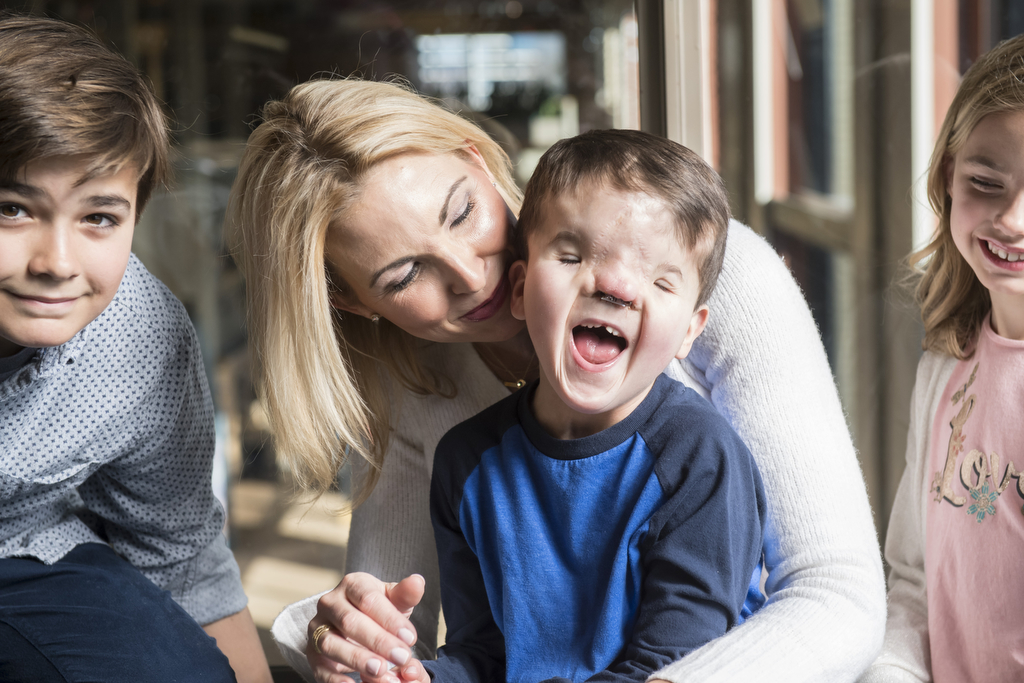
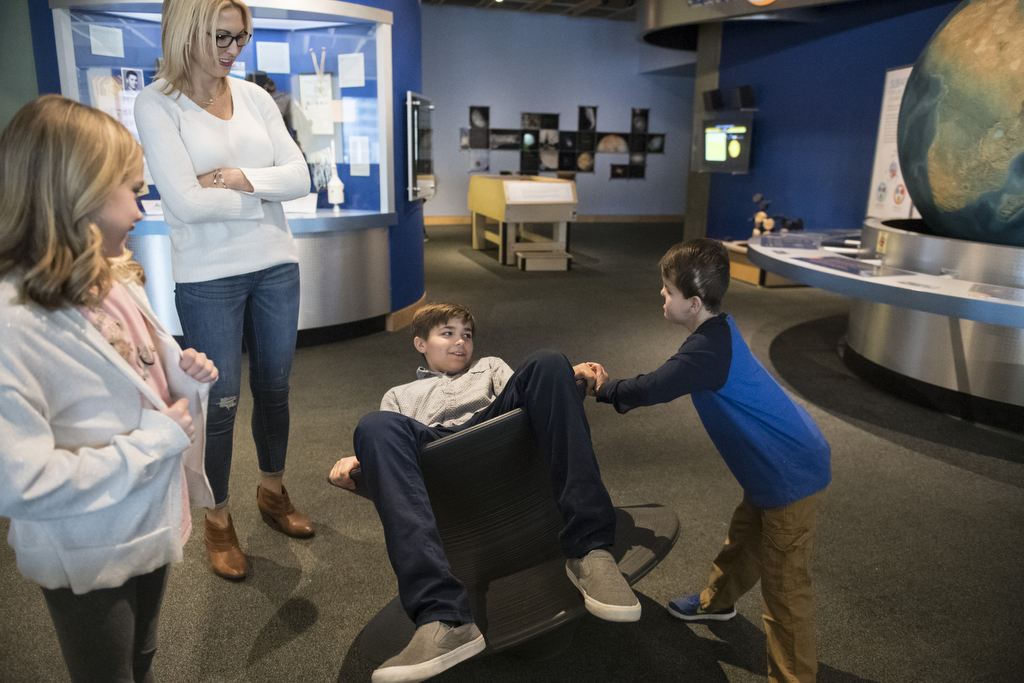

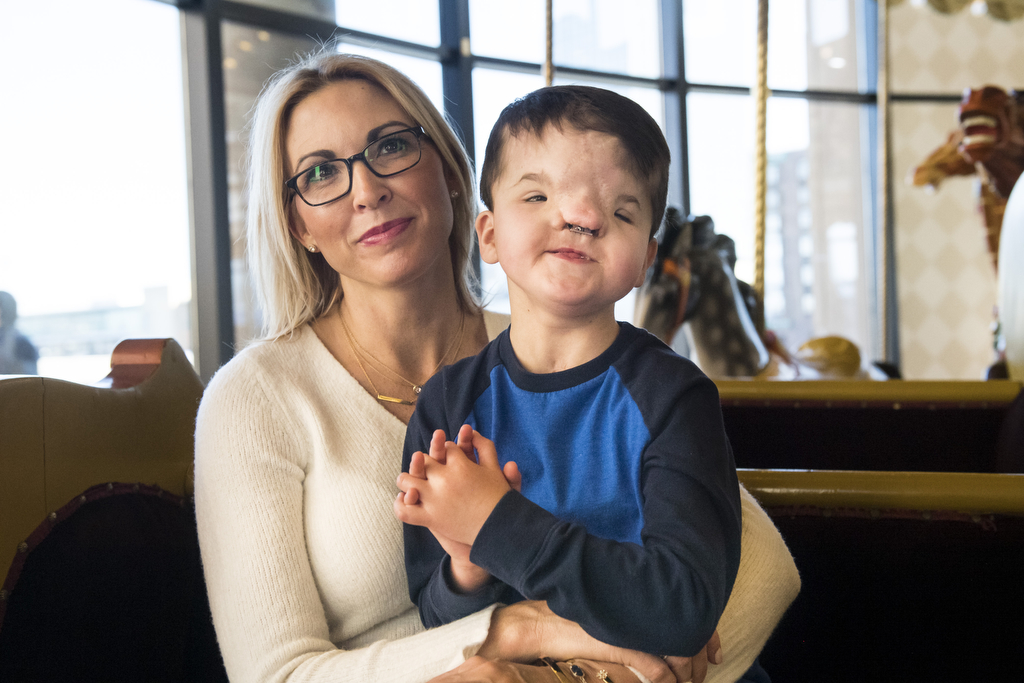
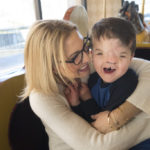
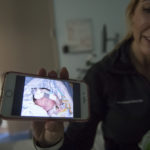
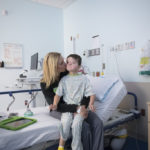
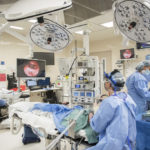


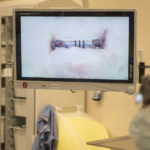





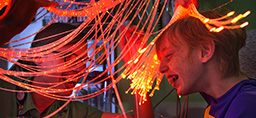 /a>
/a>
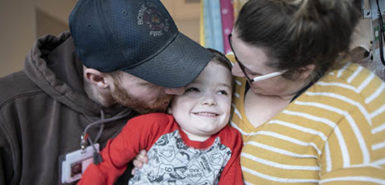 /a>
/a>
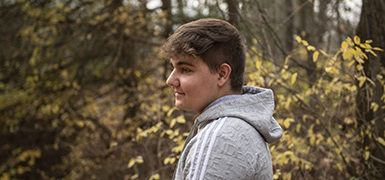 /a>
/a>
April I have followed Easton’s progress through your mom and am so happy to see the progress he has made. Many prayers have gone out and continue for you and your beautiful family.
Take care,
Karen Schmidt
I am one of those nurses who had the awesome blessing of caring for Easton in his home, from the time he was 6 months old until he was decannulated. God could not have entrusted this little boy to a better family! They are a class act all the way and Easton has thrived because of their love and care! I am most blessed as a nurse to have had the privilege to have a small part in Easton’s care. I miss him like crazy but am so proud of the things he’s overcome and the remarkable progress he’s made with an amazing attitude!!!!